
9 Ways To Stand Out In A Group Interview
 Bigstock
{"adCodes": [{"desktop": "\u003cdiv class=\u0027rblad-wit_content\u0027\u003e\u003c/div\u003e", "display": true, "mobile": "\u003cdiv class=\u0027rblad-wit_content\u0027\u003e\u003c/div\u003e", "new_amp": "\u003camp-ad width=336 height=280\n type=\"doubleclick\"\n data-slot=\"/22278042776,22664312254/wit/wit_content\"\n data-multi-size=\"300x250\"\u003e\n\u003c/amp-ad\u003e", "order": 0, "tablet": "\u003cdiv class=\u0027rblad-wit_content\u0027\u003e\u003c/div\u003e"}, {"desktop": "\u003cdiv class=\u0027rblad-wit_content\u0027\u003e\u003c/div\u003e", "display": true, "mobile": "\u003cdiv class=\u0027rblad-wit_content\u0027\u003e\u003c/div\u003e", "new_amp": "\u003camp-ad width=336 height=280\n type=\"doubleclick\"\n data-slot=\"/22278042776,22664312254/wit/wit_content\"\n data-multi-size=\"300x250\"\u003e\n\u003c/amp-ad\u003e", "order": 1, "tablet": "\u003cdiv class=\u0027rblad-wit_content\u0027\u003e\u003c/div\u003e"}, {"desktop": "\u003cdiv class=\u0027rblad-wit_content\u0027\u003e\u003c/div\u003e", "display": true, "mobile": "\u003cdiv class=\u0027rblad-wit_content\u0027\u003e\u003c/div\u003e", "new_amp": "\u003camp-ad width=336 height=280\n type=\"doubleclick\"\n data-slot=\"/22278042776,22664312254/wit/wit_content\"\n data-multi-size=\"300x250\"\u003e\n\u003c/amp-ad\u003e", "order": 2, "tablet": "\u003cdiv class=\u0027rblad-wit_content\u0027\u003e\u003c/div\u003e"}], "adsOrder": [2]}
Bigstock
{"adCodes": [{"desktop": "\u003cdiv class=\u0027rblad-wit_content\u0027\u003e\u003c/div\u003e", "display": true, "mobile": "\u003cdiv class=\u0027rblad-wit_content\u0027\u003e\u003c/div\u003e", "new_amp": "\u003camp-ad width=336 height=280\n type=\"doubleclick\"\n data-slot=\"/22278042776,22664312254/wit/wit_content\"\n data-multi-size=\"300x250\"\u003e\n\u003c/amp-ad\u003e", "order": 0, "tablet": "\u003cdiv class=\u0027rblad-wit_content\u0027\u003e\u003c/div\u003e"}, {"desktop": "\u003cdiv class=\u0027rblad-wit_content\u0027\u003e\u003c/div\u003e", "display": true, "mobile": "\u003cdiv class=\u0027rblad-wit_content\u0027\u003e\u003c/div\u003e", "new_amp": "\u003camp-ad width=336 height=280\n type=\"doubleclick\"\n data-slot=\"/22278042776,22664312254/wit/wit_content\"\n data-multi-size=\"300x250\"\u003e\n\u003c/amp-ad\u003e", "order": 1, "tablet": "\u003cdiv class=\u0027rblad-wit_content\u0027\u003e\u003c/div\u003e"}, {"desktop": "\u003cdiv class=\u0027rblad-wit_content\u0027\u003e\u003c/div\u003e", "display": true, "mobile": "\u003cdiv class=\u0027rblad-wit_content\u0027\u003e\u003c/div\u003e", "new_amp": "\u003camp-ad width=336 height=280\n type=\"doubleclick\"\n data-slot=\"/22278042776,22664312254/wit/wit_content\"\n data-multi-size=\"300x250\"\u003e\n\u003c/amp-ad\u003e", "order": 2, "tablet": "\u003cdiv class=\u0027rblad-wit_content\u0027\u003e\u003c/div\u003e"}], "adsOrder": [2]}
If you're a job hunter, you have to remember that job interviews are not all the same. Some job interviews not only require you to answer somewhat stressful questions directly from your interviewer, but they can also require you to face a group of co-interviewees and (technically) compete with them by practically standing out among the crowd.
This kind of job interview is (obviously) called a group interview.
If you're still wondering, "What is a group interview?" you're not alone. A group interview is just like the traditional job interview with a question and answer portion, and some examinations.
However, what adds more tension to the air is the fact that you have to go toe-to-toe with other job seekers, and force yourself to stand out without disrespecting and interrupting your interviewer and co-interviewees. You have to be both smooth and confident here.
If this is kind of scaring the hell out of you, breathe and just continue reading. After this, you will be as prepared as the ants during rainy season. Here are nine effective ways to stand out in a group job interview:
1. Research Beforehand
It is very important, whether it's a group interview or a traditional job interview, to do research beforehand. You should know what you need to look for. Just make sure you know something about the company and any other details they can possibly ask you.
Keep in mind, though, that research doesn't only pertain to Google. Go out and observe, or conduct your own interviews.
2. Arrive 30 Minutes Before The Time And Observe Bigstock
BigstockDon't just be "on time." Be there before the assigned time. This way, you can still rest and freshen up a bit. You can also continue on with your research by observing the office, and reading some posters or notes on their bulletin boards. Being early for the interview will do you a lot of good.
3. Prepare A Self-Introduction
Bigstock
Most likely, you will be asked to introduce yourself, especially in a group job interview. To save yourself some time and pressure, compose and memorize fluidly a self-introduction. Give it all your best essay writing prowess. This will certainly come in handy.
Remember, the "first impression lasts" saying is still true.
4. Listen Very Carefully
Bigstock
During a group interview, never let yourself float into nowhere. Always be attentive and alert. Don't just listen to the questions asked. Listen to your peers' answers as well. This will help you think and answer better.
5. Answer First Every Once In A While
Bigstock
Make it a point to be the first one to answer your interviewer's question every once in a while. I repeat, only once in a while. You don't have to bully the other candidates. But you shouldn't appear to be too shy and timid, either.
Being the first one to answer without obviously trying to dominate the group interview can help your interviewer's easy recall and good impression of you as a job candidate.
6. Support Some Co-Interviewees' Statements
Bigstock
Since you don't need to be the first one to answer all the questions, try to be kind and supportive of the other candidates' answers every now and then. This way, you may appear to be a supportive leader and a team player at the same time.
7. Smile And Nod A Lot
Bigstock
While someone else is talking, listen, smile, and nod a lot. It's a sign of respect and that you are listening intently to them. It's always better to be noticed because of nodding and smiling than to be all stiff and nervous.
8. Ask Brilliant Questions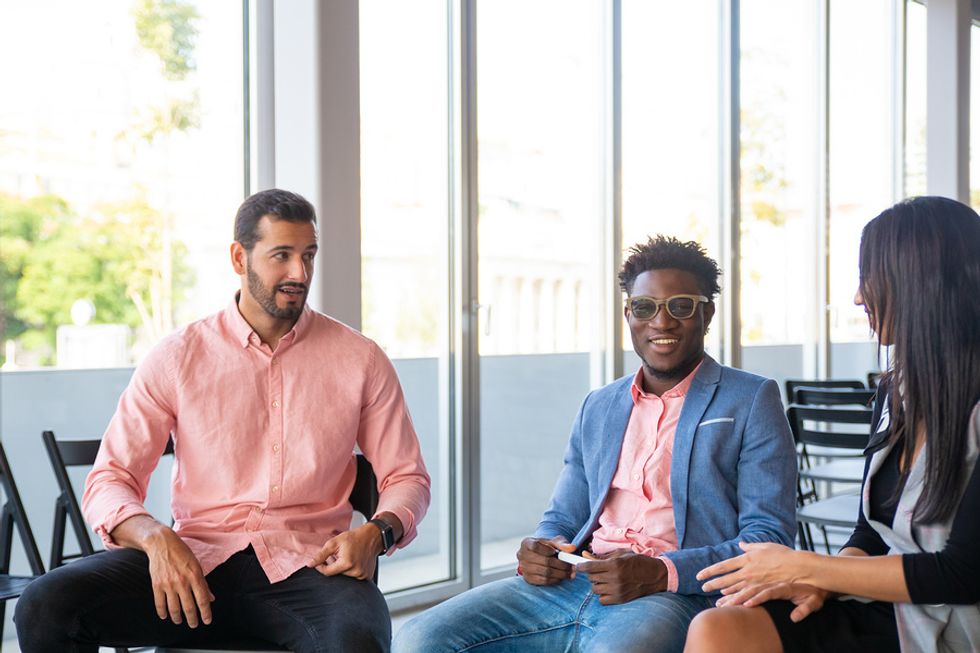
Bigstock
As soon as your interviewer asks you if you have any questions in mind, try your best to formulate a good and intelligent one. That's why, aside from thinking sharply, you also need to listen carefully throughout the course of the interview.
Once you've already formulated a question or two, do your best to keep them in mind and wait until your interviewer asks you if you have any. Don't interrupt him or her.
Brilliant questions will make you notable. It means you're listening well and you are eager to learn more. That's why good and intelligent questions are so important.
9. Greet And Thank Your Interviewer And Co-Interviewees
Bigstock
At the end of the group interview, make it a point to thank your interviewer and shake hands with your co-interviewees. This shows you are well-mannered and respectful.
Group job interviews can be terrifying. However, they're not as bad as they may seem.
Now that you know how to succeed at a group interview, you should already be more confident! Group interviews can even give you the edge that you need more than a traditional job interview can.
So, don't fear your upcoming group interview! It's just another opportunity for you to shine and prove that YOU are the best fit for the position!
Need more help with your job search?
We'd love it if you signed up for Work It Daily's Power Hour Event Subscription! Get your career questions answered in our next live event!
This article was originally published at an earlier date.
From Your Site Articles- 8 Simple Interview Questions To Ask Hiring Managers - Work It Daily ›
- Interview HACK: #1 Secret To Answering Hard Interview Questions ... ›
- This is How You Can Stand Out at your Next Job Interview! - Work It ... ›
- 10 Effective Ways To Stand Out At Work - Work It Daily | Where Careers Go To Grow ›
- How To Stand Out When Applying For A Job Online - Work It Daily | Where Careers Go To Grow ›
- 3 Interview Hacks That Will Help You Land The Job - Work It Daily | Where Careers Go To Grow ›
- 5 Things Every Employer Wants To Hear In An Interview - Work It Daily | Where Careers Go To Grow ›
- 3 Signs Your Job Interview Didn't Go Well - Work It Daily | Where Careers Go To Grow ›
- 5 Tips To Ace Your Next Skype Interview - Work It Daily | Where Careers Go To Grow ›
- How To Avoid Appearing Overconfident During Job Interviews - Work It Daily | Where Careers Go To Grow ›
- 5 Interview Hacks That Will Give You An Edge (No Confidence Required) - Work It Daily | Where Careers Go To Grow ›
- 4 Types of Interviews and How to Prepare for Them - Work It Daily | Where Careers Go To Grow ›
- 4 Things Job Seekers Are Rated On During The Interview - Work It Daily | Where Careers Go To Grow ›
- 4 Steps To Preparing For A Job Interview - Work It Daily | Where Careers Go To Grow ›
- 7 Ways To Use The Law Of Attraction In Your Job Search - Work It Daily | Where Careers Go To Grow ›
- 3 Tips For Being Memorable During A Job Interview - Work It Daily ›
- 5 Interview Secrets That Will Help You Beat The Competition - Work It Daily ›
- 6 Ways To Be Interesting During Your Interview - Work It Daily ›
- 4 Easy Ways To Stand Out To Employers - Work It Daily ›
- Top 5 Proactive Job Interview Strategies - Work It Daily ›
- 5 Mock Interview Tips For Success - Work It Daily ›
- 5 Tips To Ace Your Panel Interview - Work It Daily ›
- 13 Interview Tips For Introverts - Work It Daily ›
- 7 Essential Questions To Ask In A Job Interview - Work It Daily ›
- What You Need To Know Going Into A Job Interview - Work It Daily ›
- Preparing For An Interview: A Step-By-Step Guide - Work It Daily ›
- How to Stand Out in a Group Interview - Glassdoor Career Guides ›
- How to Succeed at a Group Interview | Indeed.com ›
- Why Asking This 1 Question in a Job Interview Increases the ... ›
 Source
{"adCodes": [{"desktop": "\u003cdiv class=\u0027rblad-wit_content\u0027\u003e\u003c/div\u003e", "display": true, "mobile": "\u003cdiv class=\u0027rblad-wit_content\u0027\u003e\u003c/div\u003e", "new_amp": "\u003camp-ad width=336 height=280\n type=\"doubleclick\"\n data-slot=\"/22278042776,22664312254/wit/wit_content\"\n data-multi-size=\"300x250\"\u003e\n\u003c/amp-ad\u003e", "order": 0, "tablet": "\u003cdiv class=\u0027rblad-wit_content\u0027\u003e\u003c/div\u003e"}, {"desktop": "\u003cdiv class=\u0027rblad-wit_content\u0027\u003e\u003c/div\u003e", "display": true, "mobile": "\u003cdiv class=\u0027rblad-wit_content\u0027\u003e\u003c/div\u003e", "new_amp": "\u003camp-ad width=336 height=280\n type=\"doubleclick\"\n data-slot=\"/22278042776,22664312254/wit/wit_content\"\n data-multi-size=\"300x250\"\u003e\n\u003c/amp-ad\u003e", "order": 1, "tablet": "\u003cdiv class=\u0027rblad-wit_content\u0027\u003e\u003c/div\u003e"}, {"desktop": "\u003cdiv class=\u0027rblad-wit_content\u0027\u003e\u003c/div\u003e", "display": true, "mobile": "\u003cdiv class=\u0027rblad-wit_content\u0027\u003e\u003c/div\u003e", "new_amp": "\u003camp-ad width=336 height=280\n type=\"doubleclick\"\n data-slot=\"/22278042776,22664312254/wit/wit_content\"\n data-multi-size=\"300x250\"\u003e\n\u003c/amp-ad\u003e", "order": 2, "tablet": "\u003cdiv class=\u0027rblad-wit_content\u0027\u003e\u003c/div\u003e"}], "adsOrder": [2]}
Source
{"adCodes": [{"desktop": "\u003cdiv class=\u0027rblad-wit_content\u0027\u003e\u003c/div\u003e", "display": true, "mobile": "\u003cdiv class=\u0027rblad-wit_content\u0027\u003e\u003c/div\u003e", "new_amp": "\u003camp-ad width=336 height=280\n type=\"doubleclick\"\n data-slot=\"/22278042776,22664312254/wit/wit_content\"\n data-multi-size=\"300x250\"\u003e\n\u003c/amp-ad\u003e", "order": 0, "tablet": "\u003cdiv class=\u0027rblad-wit_content\u0027\u003e\u003c/div\u003e"}, {"desktop": "\u003cdiv class=\u0027rblad-wit_content\u0027\u003e\u003c/div\u003e", "display": true, "mobile": "\u003cdiv class=\u0027rblad-wit_content\u0027\u003e\u003c/div\u003e", "new_amp": "\u003camp-ad width=336 height=280\n type=\"doubleclick\"\n data-slot=\"/22278042776,22664312254/wit/wit_content\"\n data-multi-size=\"300x250\"\u003e\n\u003c/amp-ad\u003e", "order": 1, "tablet": "\u003cdiv class=\u0027rblad-wit_content\u0027\u003e\u003c/div\u003e"}, {"desktop": "\u003cdiv class=\u0027rblad-wit_content\u0027\u003e\u003c/div\u003e", "display": true, "mobile": "\u003cdiv class=\u0027rblad-wit_content\u0027\u003e\u003c/div\u003e", "new_amp": "\u003camp-ad width=336 height=280\n type=\"doubleclick\"\n data-slot=\"/22278042776,22664312254/wit/wit_content\"\n data-multi-size=\"300x250\"\u003e\n\u003c/amp-ad\u003e", "order": 2, "tablet": "\u003cdiv class=\u0027rblad-wit_content\u0027\u003e\u003c/div\u003e"}], "adsOrder": [2]}
Early in my career, I worked for The Disney Channel, part of which included managing events where Disney character assets were constantly being requested. As I managed each of these events, I followed the Disney brand identity, ensuring it was implemented and executed to a tee. One of the issues I ran into quite often was people requesting events where they submitted their own Disney character art that was not approved, did not fit within the Disney visual identity, and was off-brand.
Part of Disney’s success in creating a recognizable and trusted brand is how they execute their visual identity seamlessly both internally throughout their organization and externally with all of their partners.

Source
A brand identity is how your brand defines itself. This includes the brand’s values, beliefs, and personality. It is what you want people to feel when they interact with your brand through distinct visual and audio elements.
All of your visual and audio elements need to work together to resonate with your audience in order to tell your overall brand story in a consistent, purposeful way.
A well-defined brand identity distinguishes your company and influences the way your brand is perceived in the eyes of your consumers, in turn leading to brand loyalty.
Visual Identity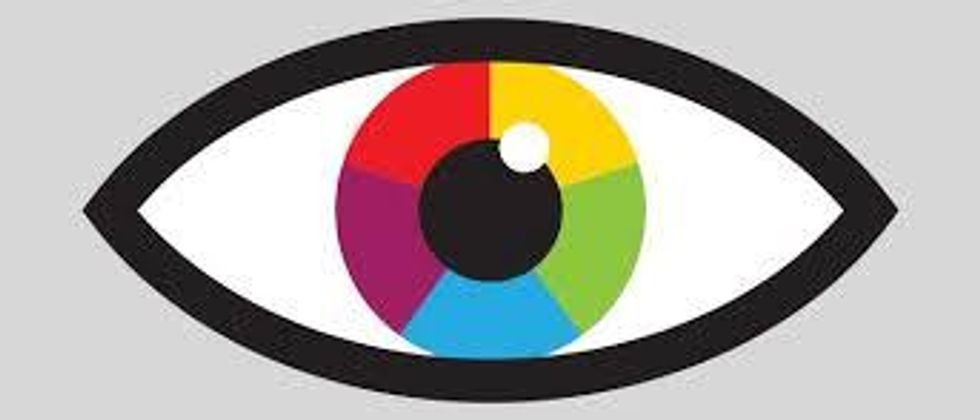
Source
A visual identity is a collection of visual assets that define the look and feel of your brand, making it unique and recognizable. It’s how you shape consumer perceptions and create a lasting impression.
Importance Of Visual Identity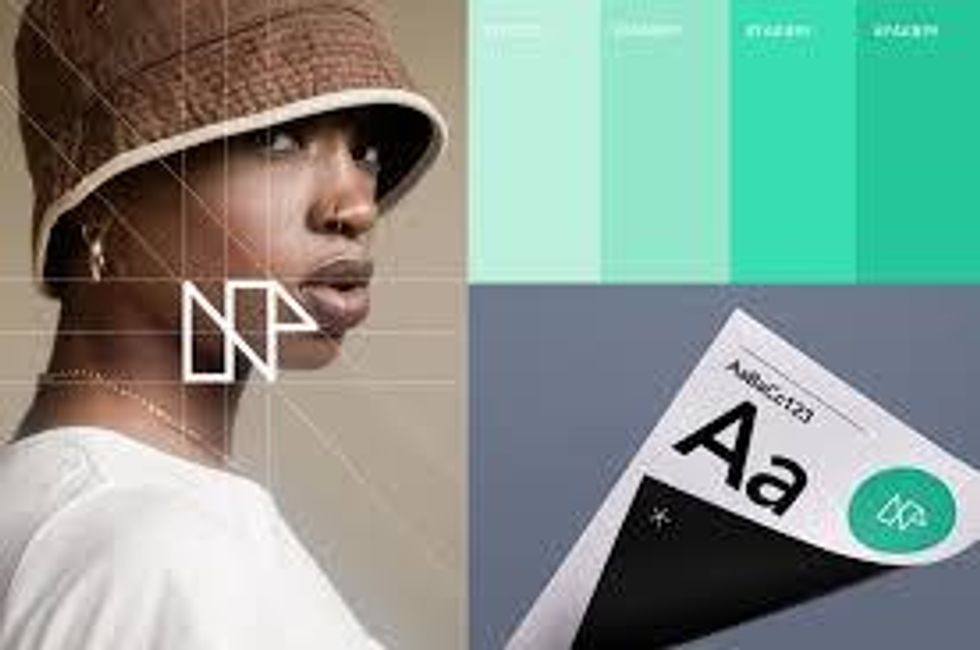
Source
Why is having a visual identity so important? Your visual identity is one of the first things consumers notice about your brand. It highlights your brand’s personality, helps create an emotional connection with your customers, and how you stand out from your competition. Your visual identity needs to capture your consumers' attention in a matter of seconds.
- Consumers process images in less than 13 milliseconds
- It takes 50 milliseconds to make a good first impression
- Consumers spend less than 10 seconds making a purchase
- 95% of purchase decisions take place subconsciously

Source
While your appearance is the first thing that people notice about your brand, your brand strategy is the foundation that guides your visual identity. Your visual identity articulates who you are, why you exist, and what you stand for.
Here are four steps to developing your brand strategy (brand strategy template) which will help pull together your visual identity:
- Develop your brand purpose, mission, vision, & values
- Create your messaging framework: brand promise, unique selling proposition (USP), value proposition, target audience, tagline, brand essence, tone & voice
- Identify your positioning
- Construct your brand personality

Source
All of the assets in your visual identity need to work together, providing a unified message that tells a story, evokes emotion, and encourages engagement. To create your visual identity, it’s important to understand the elements included:
- Logo: Your logo is the most visible and recognizable component of your brand. Your brand logo’s job is to identify you, differentiate you, and ensure people remember you. It is the “face” of your brand. There are different types of logos to consider. A wordmark is text only—company names, monograms, or initials (Coca-Cola, Subway). A brandmark is a graphic symbol or icon represented by real-world objects (Target’s Bullseye, Twitter’s Bird). Abstract logo marks are conceptual, big picture logos consisting of a symbol that is tailor-made for you (Nike Swoosh, Microsoft Squares). Mascots are images of characters or persons that visually represent your business “spokesperson” (Pillsbury Doughboy, KFC’s Colonel Sanders). Combination logos combine both images and words (Burger King, Doritos). Emblem logos consist of a font inside a symbol or icon, usually a badge, seal, or crest (BMW, Starbucks). Dynamic marks are a new form of logos. Instead of having one standard font, color, and/or text combination for your logo, these elements can now change depending on how it is used. Monogram logos are logos that consist of letters or initials of a company (HBO, CNN). To get started developing your logo, you can work with an agency or use an online site like Canva or Namecheap’s logo maker. Be sure that your logo works across all of your platforms, marketing materials, and at different sizes.
- Typography: Typography is the style or appearance of the text you use in your branding. There are many different fonts and each one evokes different meanings and feelings. Big block letters convey power, strength, and impact while a swirling script communicates elegance, style, and femininity. You can use fonts from an existing library or design one of your own. The key is to identify primary, secondary, and tertiary typefaces that uniquely represent your brand. Be sure to test for legibility across different platforms (i.e. online, OOH, print, etc) to ensure what you’ve selected works.
- Colors: Your brand’s color palette is a set of specific color hues, shades, and tints used across all of your marketing materials. It’s important when identifying your brand colors to understand the psychology, feelings, and emotions associated with them. When selecting your colors, use a color wheel (a circle graphic that helps define the relationships between colors), one main color, two primary colors, and three to five complementary colors.
- Imagery: Imagery consists of photography, video content, illustrations, and spokespeople. In order to communicate the right message, think about the imagery you want to use (i.e. stock photos, original shots, user-generated content). Be cognizant of how you depict people, characters, and/or products.
- Graphics: Graphics can include shapes, patterns, textures, lines, and icons. These extra details can add dimension, help tie together your visual elements, and contribute to your overall brand identity.
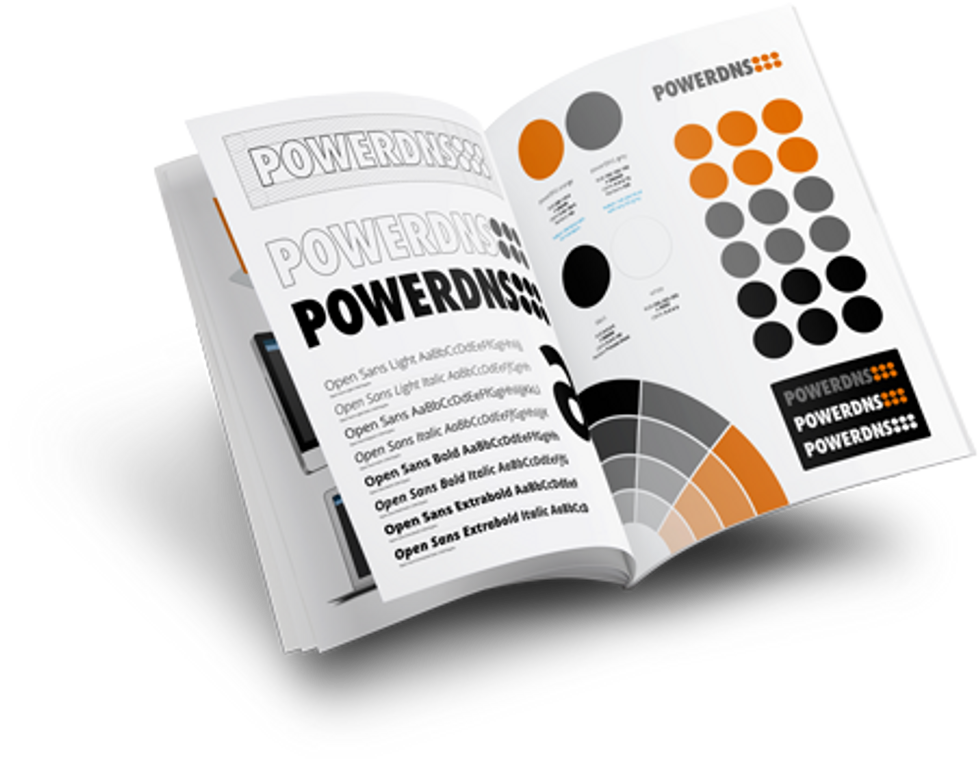
Source
Your visual identity is represented in a brand style guide. A brand style guide are guidelines on how to communicate your brand and deliver a consistent visual experience to your customers. Your brand style guide should evolve over time to reflect the overall brand experience as it changes.
In Summary
Brands that have effectively taken charge of their visual identity systems are recognizable, help tell their brand story in a unique way, bring order to complexity, are authentic to their brand, and ensure consistency across all marketing channels and touchpoints. Start building your brand leadership today. You’ve got this!
Read moreShow lessbrand visual identity {"customDimensions": {"1":"Executive Community, Lisa Perry","2":"community","3":"brand visual identity, visual identity, brand identity, brand, marketing, branding, creating a visual identity, ~rmsc:rebelmouse-image:30813588, ~rmsc:rebelmouse-image:30796689, ~rmsc:rebelmouse-image:30796705, ~rmsc:rebelmouse-image:30796821, ~rmsc:rebelmouse-image:30813595, ~rmsc:rebelmouse-image:30796921, ~rmsc:rebelmouse-image:30796956","4":"08/09/2022"}, "post": {"split_testing": {}, "providerId": 0, "sections": [0, 544324100, 544398583, 552342491, 479660731, 473333499], "buckets": [], "authors": [21030904, 20234095]} } Community 7 Things I’ve Learned About Recruiting Non-Profit CEOs Colleen NeeseAugust 09, 2022 Bigstock
{"adCodes": [{"desktop": "\u003cdiv class=\u0027rblad-wit_content\u0027\u003e\u003c/div\u003e", "display": true, "mobile": "\u003cdiv class=\u0027rblad-wit_content\u0027\u003e\u003c/div\u003e", "new_amp": "\u003camp-ad width=336 height=280\n type=\"doubleclick\"\n data-slot=\"/22278042776,22664312254/wit/wit_content\"\n data-multi-size=\"300x250\"\u003e\n\u003c/amp-ad\u003e", "order": 0, "tablet": "\u003cdiv class=\u0027rblad-wit_content\u0027\u003e\u003c/div\u003e"}, {"desktop": "\u003cdiv class=\u0027rblad-wit_content\u0027\u003e\u003c/div\u003e", "display": true, "mobile": "\u003cdiv class=\u0027rblad-wit_content\u0027\u003e\u003c/div\u003e", "new_amp": "\u003camp-ad width=336 height=280\n type=\"doubleclick\"\n data-slot=\"/22278042776,22664312254/wit/wit_content\"\n data-multi-size=\"300x250\"\u003e\n\u003c/amp-ad\u003e", "order": 1, "tablet": "\u003cdiv class=\u0027rblad-wit_content\u0027\u003e\u003c/div\u003e"}, {"desktop": "\u003cdiv class=\u0027rblad-wit_content\u0027\u003e\u003c/div\u003e", "display": true, "mobile": "\u003cdiv class=\u0027rblad-wit_content\u0027\u003e\u003c/div\u003e", "new_amp": "\u003camp-ad width=336 height=280\n type=\"doubleclick\"\n data-slot=\"/22278042776,22664312254/wit/wit_content\"\n data-multi-size=\"300x250\"\u003e\n\u003c/amp-ad\u003e", "order": 2, "tablet": "\u003cdiv class=\u0027rblad-wit_content\u0027\u003e\u003c/div\u003e"}], "adsOrder": [2]}
Bigstock
{"adCodes": [{"desktop": "\u003cdiv class=\u0027rblad-wit_content\u0027\u003e\u003c/div\u003e", "display": true, "mobile": "\u003cdiv class=\u0027rblad-wit_content\u0027\u003e\u003c/div\u003e", "new_amp": "\u003camp-ad width=336 height=280\n type=\"doubleclick\"\n data-slot=\"/22278042776,22664312254/wit/wit_content\"\n data-multi-size=\"300x250\"\u003e\n\u003c/amp-ad\u003e", "order": 0, "tablet": "\u003cdiv class=\u0027rblad-wit_content\u0027\u003e\u003c/div\u003e"}, {"desktop": "\u003cdiv class=\u0027rblad-wit_content\u0027\u003e\u003c/div\u003e", "display": true, "mobile": "\u003cdiv class=\u0027rblad-wit_content\u0027\u003e\u003c/div\u003e", "new_amp": "\u003camp-ad width=336 height=280\n type=\"doubleclick\"\n data-slot=\"/22278042776,22664312254/wit/wit_content\"\n data-multi-size=\"300x250\"\u003e\n\u003c/amp-ad\u003e", "order": 1, "tablet": "\u003cdiv class=\u0027rblad-wit_content\u0027\u003e\u003c/div\u003e"}, {"desktop": "\u003cdiv class=\u0027rblad-wit_content\u0027\u003e\u003c/div\u003e", "display": true, "mobile": "\u003cdiv class=\u0027rblad-wit_content\u0027\u003e\u003c/div\u003e", "new_amp": "\u003camp-ad width=336 height=280\n type=\"doubleclick\"\n data-slot=\"/22278042776,22664312254/wit/wit_content\"\n data-multi-size=\"300x250\"\u003e\n\u003c/amp-ad\u003e", "order": 2, "tablet": "\u003cdiv class=\u0027rblad-wit_content\u0027\u003e\u003c/div\u003e"}], "adsOrder": [2]}
Over the past several years, I’ve had the honor to lead the recruitment process for 22 non-profit CEOs and have learned a thing or two about what a successful search process entails.
1. Start With A Strategy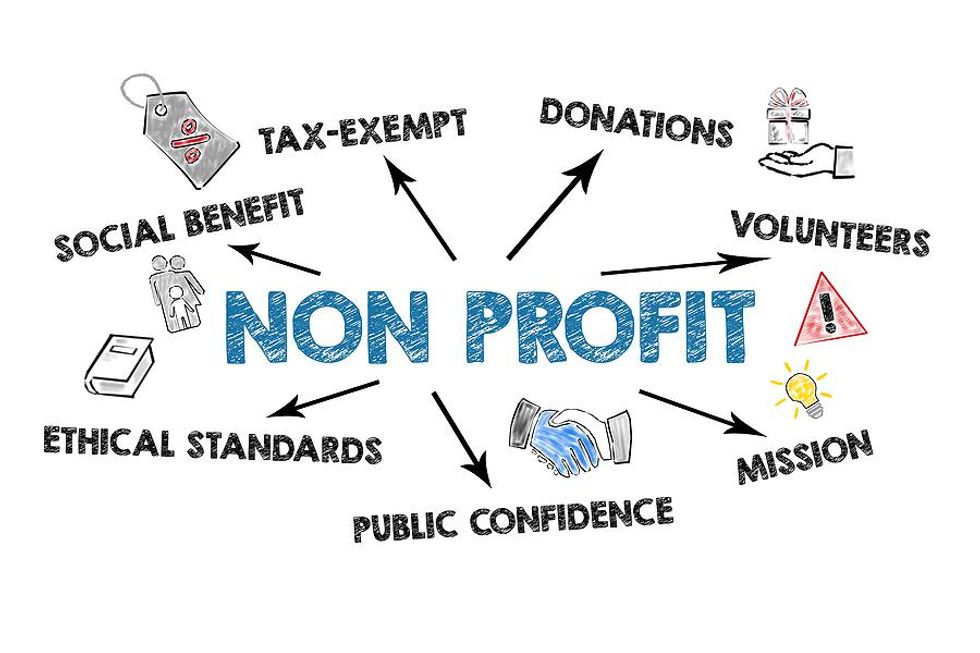
Bigstock
When recruiting for non-profit CEOs, it’s critical to have a well-defined strategy put in place before beginning the search. The strategy is typically created by the search consultant leading the search and that person must gain the buy-in from all stakeholders including the search committee and board of directors. The strategy will include, whether it’s a local, regional, or national search, the must-haves versus the preferred qualifications of the ideal candidate. The strategy will also outline the target audience, including industries, specific companies, and specific roles/positions/people at those companies.
2. Mission Matters
Bigstock
When recruiting for a non-profit CEO, connection to the mission is critical! For example, when recruiting for a CEO of a non-profit that serves families with disabilities, we targeted people with the skill set to do the job but also uncovered their connection to the mission by finding out if they had direct ties to either serving families with disabilities or had a child with a disability and had the lived experience, or both.
Another example is when recruiting for the CEO of a non-profit that serves families who receive a Catholic education, we uncovered whether or not the candidates received a similar Catholic education or if their children had, therefore providing them with the lived experience and direct tie to the mission.
3. Search Committees Are Necessary
Bigstock
I’ve had the privilege of working with many different search committees and have found that, for the most part, these individuals are talented and dedicated business leaders who take their commitment to the organization very seriously and dedicate a lot of time to ensuring the search process goes smoothly.
The chair of the search committee is typically my main point of contact and the person who dedicates the most time to the process and is also the final decision-maker in certain situations. My job is to make the search as seamless as possible and to take as much off their plate as possible.
4. Non-Profits Need Strong Business Leaders Bigstock
BigstockAfter recruiting in the for-profit world for many years before switching to the non-profit sector, I have found that many non-profits are in need of business leaders who are just as strong in their business acumen as their for-profit counterparts. In fact, many leaders from the for-profit sector welcome a change into the non-profit sector, bringing in a fresh perspective, while having the opportunity to use their many skills to help their community.
5. Non-Profits Need To Ensure Fiscal Responsibility Towards Their Mission
Bigstock
It’s so important for the money to go towards the mission, and not towards unnecessary or wasteful spending. Uncovering how a CEO has grown the reach of their organization and how they’ve grown the budget, while staying true to the mission, is important information.
6. Fundraising Is A Critical Skill Set Needed
Bigstock
For small non-profits, the CEO is oftentimes the primary fundraiser. As an agency grows, so does the need for a development department. No matter what the size is, fundraising is always a critical component and although many non-profits receive government funding, diversifying funding streams and bringing in revenue to support the mission is so important!
7. Non-Profit CEOs Are Some Of The Most Brilliant, Compassionate People On The Planet!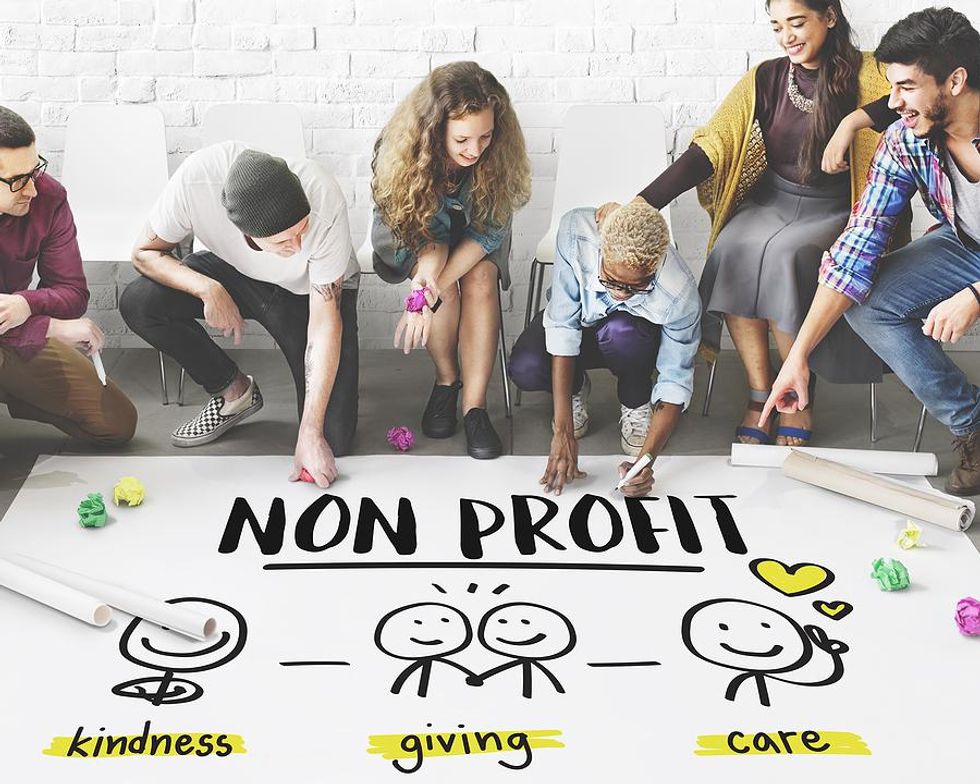
Bigstock
One of the best parts of my job is getting the opportunity to work with people who have used their time and talents to make our world a better place. Whether they are helping people experiencing homelessness, hunger, or violence, or helping people who have disabilities or critical illnesses, many of these leaders are angels on earth making our world a better place!
If you need to recruit for this type of position, please contact me at [email protected] or (602) 802-8329 or on LinkedIn.
Read moreShow lessrecruiting nonprofit ceo {"customDimensions": {"1":"Executive Community, Colleen Neese","2":"community","3":"recruiting nonprofit ceo, recruiters, nonprofit, non-profit, nonprofit sector, nonprofit organization, recruiting, executives, ceo, ceos, duffy group, colleen neese, leaders, leadership, leader, strategy, mission, search committee, business leaders, fiscal responsibility, fundraising, ~rmsc:rebelmouse-image:30196437, ~rmsc:rebelmouse-image:30196459, ~rmsc:rebelmouse-image:30196470, ~rmsc:rebelmouse-image:30196796, ~rmsc:rebelmouse-image:24667712, ~rmsc:rebelmouse-image:30196836, ~rmsc:rebelmouse-image:30197211, ~rmsc:rebelmouse-image:30197186","4":"08/09/2022"}, "post": {"split_testing": {}, "providerId": 0, "sections": [0, 544324100, 544398574, 544398578, 544398585, 473333499, 479660731], "buckets": [], "authors": [21030904, 25307027]} } Featured 9 Ways To Stand Out In A Group Interview
{"customDimensions": {"1":"Veronica Finch, Jenna Arcand","2":"popular","3":"interview, interview tips, interview preparation, interview prep, group interview, job search, job search tips, job search advice, career change, career change tips, ~popular_source-pageview, get hired, career success, group interview questions, group job interviews, group job interview, how do you stand out in a group job interview, how to succeed at group interviews, university group interview tips, what is a group interview, what is a group interview for a job, what to expect in a group interview, group interview tips, group interview advice, how to stand out in a group interview, job seekers, career tips, career advice, career, ~rmsc:rebelmouse-image:19804200, ~rmsc:rebelmouse-image:19808321, ~rmsc:rebelmouse-image:19804388, ~rmsc:rebelmouse-image:30076220, ~rmsc:rebelmouse-image:22833188, ~rmsc:rebelmouse-image:22833192, ~rmsc:rebelmouse-image:22833196, ~rmsc:rebelmouse-image:22833198, ~rmsc:rebelmouse-image:22833199, ~rmsc:rebelmouse-image:22833200, ~rmsc:rebelmouse-image:22833208","4":"08/10/2022"}, "post": {"split_testing": {}, "providerId": 14, "sections": [0, 370480899, 376489574, 376489962, 404327439, 479660731, 543270555, 473310813, 473333499], "buckets": [], "authors": [19548700, 19836096]} }
9 Ways To Stand Out In A Group Interview
{"customDimensions": {"1":"Veronica Finch, Jenna Arcand","2":"popular","3":"interview, interview tips, interview preparation, interview prep, group interview, job search, job search tips, job search advice, career change, career change tips, ~popular_source-pageview, get hired, career success, group interview questions, group job interviews, group job interview, how do you stand out in a group job interview, how to succeed at group interviews, university group interview tips, what is a group interview, what is a group interview for a job, what to expect in a group interview, group interview tips, group interview advice, how to stand out in a group interview, job seekers, career tips, career advice, career, ~rmsc:rebelmouse-image:19804200, ~rmsc:rebelmouse-image:19808321, ~rmsc:rebelmouse-image:19804388, ~rmsc:rebelmouse-image:30076220, ~rmsc:rebelmouse-image:22833188, ~rmsc:rebelmouse-image:22833192, ~rmsc:rebelmouse-image:22833196, ~rmsc:rebelmouse-image:22833198, ~rmsc:rebelmouse-image:22833199, ~rmsc:rebelmouse-image:22833200, ~rmsc:rebelmouse-image:22833208","4":"08/10/2022"}, "post": {"split_testing": {}, "providerId": 14, "sections": [0, 370480899, 376489574, 376489962, 404327439, 479660731, 543270555, 473310813, 473333499], "buckets": [], "authors": [19548700, 19836096]} }
 Now Hiring: Remote SysOps Engineer
{"customDimensions": {"1":"Work It Daily, Kinsta \u00ae","2":"popular","3":"kinsta, hiring, remote jobs, remote work, remote workforce, remote companies hiring, remote companies 2021, sysops engineer, sysops engineer jobs, ~popular_source-pageview, ~rmsc:rebelmouse-image:26404410, ~rmsc:rebelmouse-image:26409812","4":"05/18/2021"}, "post": {"split_testing": {}, "providerId": 0, "sections": [370480899, 545998439, 545998440, 473310812, 376489962, 526353713, 545658354, 548352055, 548352058, 543270555, 473333499, 473310813], "buckets": [], "authors": [19548593, 21891195]} }
Now Hiring: Remote SysOps Engineer
{"customDimensions": {"1":"Work It Daily, Kinsta \u00ae","2":"popular","3":"kinsta, hiring, remote jobs, remote work, remote workforce, remote companies hiring, remote companies 2021, sysops engineer, sysops engineer jobs, ~popular_source-pageview, ~rmsc:rebelmouse-image:26404410, ~rmsc:rebelmouse-image:26409812","4":"05/18/2021"}, "post": {"split_testing": {}, "providerId": 0, "sections": [370480899, 545998439, 545998440, 473310812, 376489962, 526353713, 545658354, 548352055, 548352058, 543270555, 473333499, 473310813], "buckets": [], "authors": [19548593, 21891195]} }
 3 Important Career Lessons Learned On And Off The Field
{"customDimensions": {"1":"Executive Community, J.T. O'Donnell","2":"popular","3":"career change, entrepreneur, entrepreneurship, career, career challenges, overcoming career challenges, personal branding, personal development, professional development, professional growth, success, career success, pro athletes, tom brady, chris gronkowski, nfl, tiktok, social media strategy, social media, career growth, ~rmsc:rebelmouse-image:25632872, ~rmsc:rebelmouse-image:25633076, ~rmsc:rebelmouse-image:25632876, ~rmsc:rebelmouse-image:25632899","4":"02/10/2021"}, "post": {"split_testing": {}, "providerId": 0, "sections": [0, 370480899, 473333499, 376489962, 526353713, 376489624, 479660731], "buckets": [], "authors": [21030904, 19549412]} }
3 Important Career Lessons Learned On And Off The Field
{"customDimensions": {"1":"Executive Community, J.T. O'Donnell","2":"popular","3":"career change, entrepreneur, entrepreneurship, career, career challenges, overcoming career challenges, personal branding, personal development, professional development, professional growth, success, career success, pro athletes, tom brady, chris gronkowski, nfl, tiktok, social media strategy, social media, career growth, ~rmsc:rebelmouse-image:25632872, ~rmsc:rebelmouse-image:25633076, ~rmsc:rebelmouse-image:25632876, ~rmsc:rebelmouse-image:25632899","4":"02/10/2021"}, "post": {"split_testing": {}, "providerId": 0, "sections": [0, 370480899, 473333499, 376489962, 526353713, 376489624, 479660731], "buckets": [], "authors": [21030904, 19549412]} }
 How Ex-NFL Player, Chris Gronkowski, Is Using Social Media To Change Careers
{"customDimensions": {"1":"Executive Community, J.T. O'Donnell","2":"popular","3":"2010, Barstool, camera phone, career growth and development, career growth opportunities, chrisgronkowski, cowboys, dallascowboys, dinner, football, free, gronkspike, iceshaker, investor, nfl, nflfootball, nflplayer, nflplayers, nflworkout, payday, rookie, salary, sharing, sharktank, tic toc, tic tok, tick tock, ticktock, tictok, tik tok, tiktok, tiktok.com, trade, trainingcamp, upload, video, video phone, weighin, youtube.com, ~popular_source-pageview, \u0442\u0438\u043a \u0442\u043e\u043a, \u30c6\u30a3\u30c3\u30af\u30c8\u30c3\u30af, chris gronkowski, ~rmsc:rebelmouse-image:25551501, ~rmsc:rebelmouse-image:25551637, ~rmsc:rebelmouse-image:25551540, ~rmsc:rebelmouse-image:25598481","4":"01/29/2021"}, "post": {"split_testing": {}, "providerId": 0, "sections": [0, 370480899, 473333499, 526353713, 376489624, 479660731], "buckets": [], "authors": [21030904, 19549412]} }
How Ex-NFL Player, Chris Gronkowski, Is Using Social Media To Change Careers
{"customDimensions": {"1":"Executive Community, J.T. O'Donnell","2":"popular","3":"2010, Barstool, camera phone, career growth and development, career growth opportunities, chrisgronkowski, cowboys, dallascowboys, dinner, football, free, gronkspike, iceshaker, investor, nfl, nflfootball, nflplayer, nflplayers, nflworkout, payday, rookie, salary, sharing, sharktank, tic toc, tic tok, tick tock, ticktock, tictok, tik tok, tiktok, tiktok.com, trade, trainingcamp, upload, video, video phone, weighin, youtube.com, ~popular_source-pageview, \u0442\u0438\u043a \u0442\u043e\u043a, \u30c6\u30a3\u30c3\u30af\u30c8\u30c3\u30af, chris gronkowski, ~rmsc:rebelmouse-image:25551501, ~rmsc:rebelmouse-image:25551637, ~rmsc:rebelmouse-image:25551540, ~rmsc:rebelmouse-image:25598481","4":"01/29/2021"}, "post": {"split_testing": {}, "providerId": 0, "sections": [0, 370480899, 473333499, 526353713, 376489624, 479660731], "buckets": [], "authors": [21030904, 19549412]} }
AP by OMG
Asian-Promotions.com |
Buy More, Pay Less | Anywhere in Asia
Shop Smarter on AP Today | FREE Product Samples, Latest
Discounts, Deals, Coupon Codes & Promotions | Direct Brand Updates every
second | Every Shopper’s Dream!
Asian-Promotions.com or AP lets you buy more and pay less anywhere in Asia. Shop Smarter on AP Today. Sign-up for FREE Product Samples, Latest Discounts, Deals, Coupon Codes & Promotions. With Direct Brand Updates every second, AP is Every Shopper’s Dream come true! Stretch your dollar now with AP. Start saving today!
Originally posted on: https://www.workitdaily.com/how-to-stand-out-group-interview